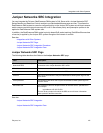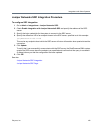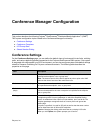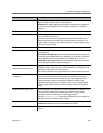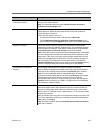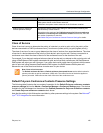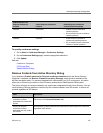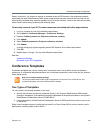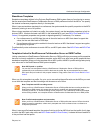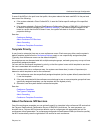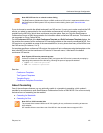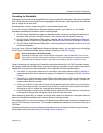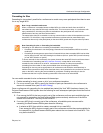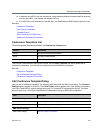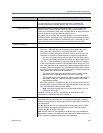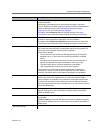
Conference Manager Configuration
Polycom, Inc. 189
Standalone Templates
Standalone templates defined in the Polycom RealPresence DMA system free you from having to ensure
that the exact same RealPresence Collaboration Server or RMX profiles exist on all the MCUs. You specify
the desired conference properties directly in the template.
When it uses a standalone template for a conference, the system sends the specific properties to the MCU
instead of pointing to one of its profiles.
When using a template not linked to a profile, the system doesn’t use the template’s properties to limit its
choice of MCU. It selects the least used MCU in the selected MCU pool (see MCU Pools and MCU Pool
Orders). Unsupported properties are ignored or degrade gracefully if necessary. For instance:
● If a conference set to a 4096 kbps line rate is forced to land on an MCU that doesn’t support that
value, the line rate falls back to 1920 kbps.
● If a conference with encryption enabled is forced to land on an MCU that doesn’t support encryption,
that property is ignored.
To preferentially route conferences to certain MCUs, use MCU pool orders. See MCU Pools and MCU Pool
Orders.
Templates Linked to RealPresence Collaboration Server or RMX Profiles
Linking a template to a RealPresence Collaboration Server or RMX profile lets you access profile properties
that aren’t currently available in a standalone template, as the MCU may offer more profile properties than
standalone templates. When you link a template with an MCU profile, the MCU’s profile settings take priority
over values set in the RealPresence DMA system template.
When you link a template to a profile, it’s up to you to ensure that the profile exists on the MCUs you want
to use with that template and that its settings are the same on all of them.
When it uses a profile-based template, the system first tries to find an MCU that has that profile (but it does
so within the MCU pool order rules; see MCU Pools and MCU Pool Orders). It selects the least used MCU
in the pool that has that profile.
Note: MCU pools vs. profiles
You can also use a template linked to a RealPresence Collaboration Server or RMX profile to
preferentially route conferences to MCUs that have the profile. But we recommend that you create
MCU pools and pool orders for this purpose instead of using profiles. See MCU Pools and MCU Pool
Orders.
Note: Templates and API recording events
When you link to a RealPresence Collaboration Server or RMX profile that has recording enabled, the
RealPresence DMA system isn’t aware that recording is enabled and rejects attempts to start
recording via the API. To enable recording control via the API, use a standalone conference template
with recording enabled, not a template linked to a RealPresence Collaboration Server or RMX profile.
Note: Profile-based templates and passcodes
When you link to a RealPresence Collaboration Server or RMX profile that uses an IVR service which
doesn’t prompt for passcodes, callers aren’t prompted even if the conference has a conference or
chairperson passcode.



